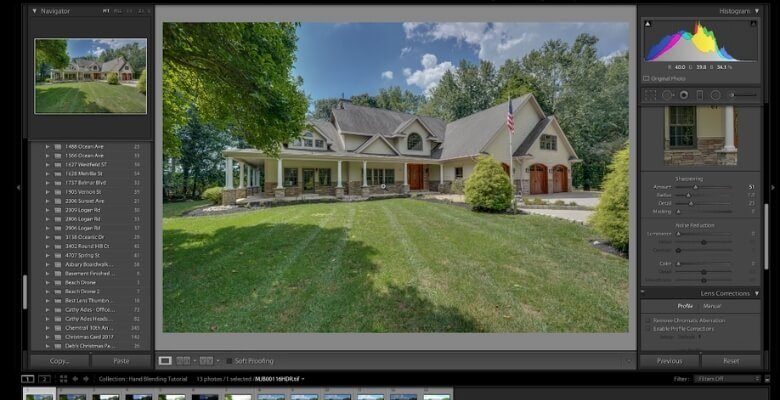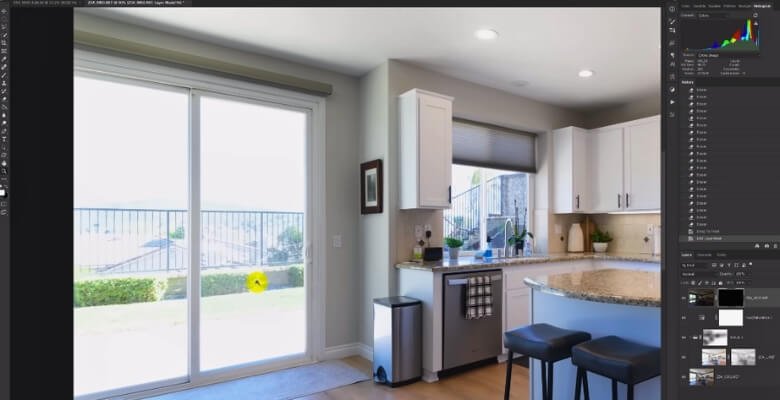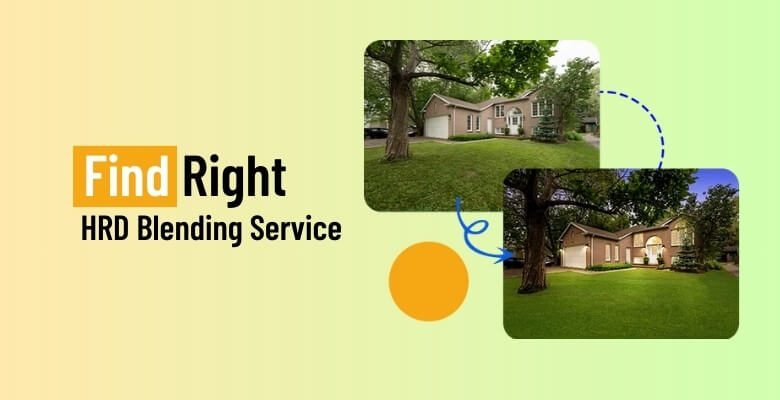A photographer’s job can be challenging since capturing details in both bright and dark areas is difficult. That’s where High Dynamic Range (HDR) photography shines, offering a way to achieve stunning, balanced photos.
So, what is HDR blending?
HDR blending is a photography technique that combines multiple exposures of the same scene to create a single, well-exposed image with a wide dynamic range. This method ensures that details are captured in both highlights and shadows, resulting in beautifully balanced photos.
By mastering HDR blending, photographers can elevate their images to a new level of visual appeal. Let’s dig deeper into HDR blending’s benefits and process in the remainder of this article.
What Makes HDR Photos Different From Traditional One?
HDR photos capture a wider range of light and color than traditional ones. This means they can show details in shadows and highlights. Traditional photos often struggle with extreme lighting conditions, losing detail in dark or bright areas. HDR photos balance these extremes, creating a more lifelike image.

The process involves taking multiple shots at different exposures and blending them. This results in a single, well-balanced image with improved details. Many photographers use HDR photo editing services to achieve this effect professionally. These services can save time and ensure stunning results without extensive manual editing.
HDR photos are particularly effective for landscapes and architectural shots. They bring out details that might be lost in a single exposure. This technique also adds depth and dimension to photos. Overall, HDR photos provide a richer, more dynamic visual experience.
What is HDR Blending and How Does it Work?
HDR blending is a technique used to create well-balanced images by combining multiple exposures. This method ensures that both bright and dark areas are properly exposed. The result is a single photo with a wide dynamic range.

Photographers start by taking several shots of the same scene at different exposure levels. These shots capture varying details in highlights and shadows. Combining these images during post-processing creates a final photo that is richly detailed and balanced.
Specialized software plays a key role in HDR blending. This software aligns the images and merges them seamlessly. The process involves adjusting the exposure of each part to achieve a harmonious look.
HDR blending is particularly useful in challenging lighting conditions. It helps photographers capture scenes with high contrast, such as sunsets or cityscapes. The final images look more realistic and visually appealing.
How Do HDR Blending Services Affect Photos?
HDR blending is a powerful photography technique that raises the quality of images. By combining multiple exposures, it captures a wider range of light. This results in photos that are more dynamic and detailed. Here are the effects HDR blending services like Visual Sparrow can have on your Photos:

Expanded Dynamic Range
HDR blending significantly expands the dynamic range of photos. It captures details in both shadows and highlights, so no part of the image is too dark or too bright. The overall effect is a more balanced and visually appealing photo.
Preserve Natural Look
This technique helps maintain a natural look in photos. Blending exposures avoids the overly processed appearance of some edited images. The result is realistic and true-to-life photos. Viewers can appreciate the scene as it appeared in reality.
Detailed Images
HDR blending amplifies the level of detail in photos. Fine textures and intricate elements are more visible, making the image more engaging and immersive. It’s particularly beneficial for landscape and architectural photography.
Accurate Color
HDR blending ensures accurate color representation in photos. It balances the various shades and tones present in the scene, leading to vibrant yet true-to-life colors. The result is a more captivating and realistic image.
Effective Indoor & Outdoor Images
This technique is effective for both indoor and outdoor photography. It handles challenging lighting conditions with ease. From dimly lit interiors to bright, sunny exteriors, HDR blending excels. This versatility makes it a valuable tool for any photographer.
Versatile Application
HDR blending is versatile and can be applied to various photography genres. Whether it’s nature, architecture, or portraits, it improves the final image. This flexibility makes it popular among photographers. The technique adapts to different scenarios, providing consistent results.
HDR blending is a valuable technique that elevates the quality of photos. It ensures detailed, balanced, and realistic images across various conditions. Mastering this method can greatly reinforce your photography skills.
When Do Professionals Use HRD Blending?
HDR blending is a crucial technique in professional photography. It’s used to handle challenging lighting conditions and upgrade image quality. This method ensures photos are both detailed and balanced.

High-Contrast Scenes
Professionals use HDR blending in high-contrast scenes. It captures details in both extremely bright and dark areas. This technique prevents losing important elements. The result is a balanced and detailed photograph.
Landscape Photography
HDR blending is essential in landscape photography. It captures the full range of light and color in natural scenes. This technique ensures skies aren’t too bright and shadows aren’t too dark. The resulting images are vibrant and realistic.
Architectural Photography
When shooting buildings, professionals rely on HDR blending. It handles the varying light conditions within a single scene. This technique ensures both interior and exterior details are visible. In general, HDR in professional photography highlights the structure’s beauty effectively.
Real Estate Photography
HDR blending is widely used in real estate photography. It showcases properties in the best possible light. This method captures every detail, making rooms appear bright and inviting. The resulting images attract potential buyers with their clarity.
Night Photography
Professionals use HDR blending in night photography. It helps capture scenes with limited light without losing details. This technique balances the dark and light areas effectively. The final photos are rich and detailed, even in low light.
Event Photography
HDR blending is useful during events with varied lighting. It captures the ambiance accurately, despite changing light conditions. This technique ensures all elements are properly exposed. The resulting photos reflect the event’s true atmosphere.
Tips to Find the Right HRD Blending Service
A good HDR blending service can greatly improve the quality of a photo. With so many options, it’s essential to choose wisely. Here are some tips to help you find the best service for your needs.

- Check Portfolio: Look at the service’s previous work to gauge their skill level. A diverse portfolio indicates versatility and experience.
- Read Reviews: Customer feedback provides valuable insights into the service’s reliability. Positive reviews are a good indicator of quality.
- Compare Prices: Ensure the service fits your budget without compromising quality. High prices don’t always guarantee the best results.
- Ask About Turnaround Time: Quick delivery is important, especially for time-sensitive projects. Ensure they can meet your deadlines reliably.
- Evaluate Communication: Good communication ensures your specific needs are understood. Prompt responses indicate a professional approach.
- Request Samples: Ask for sample edits to assess their technique. This helps determine if their style matches your vision.
- Check for Customization: It is important to ensure that the service offers tailor-made solutions for your needs. The ability to meet unique project requirements requires a great deal of flexibility.
- Consider Experience: Experienced professionals are more likely to deliver high-quality results. They have refined their skills over time.
- Look for Customer Support: Reliable support ensures any issues are promptly addressed. Good customer service heightens the overall experience.
- Verify Software Used: Professional-grade software indicates high-quality editing capabilities. Ensure they use industry-standard tools.
Choosing the right HDR blending service involves careful consideration of several factors. By following these tips, you can find a service that meets your needs and improves your photography. Making an informed decision will ensure your photos are professionally edited and visually stunning.
Frequently Asked Questions about What is HDR Blending?
HDR blending is a photography technique that elevates images by combining multiple exposures. This process results in photos with balanced lighting and rich detail. Here are some frequently asked questions about HDR blending:
Why Use HDR Blending in Photography?
HDR blending is used to handle high-contrast scenes. It ensures no part of the image is too dark or too bright, resulting in a more realistic and detailed photo.
How Does HDR Blending Improve Photo Quality?
HDR blending improves photo quality by capturing a wider dynamic range. This means more details are visible in both bright and dark areas, making the photo look more lifelike.
What Equipment Is Needed for HDR Blending?
You need a camera capable of bracketing exposures, a tripod to keep the camera steady, and software for blending images. These tools help create seamless HDR photos.
Can HDR Blending Be Used for All Types of Photography?
HDR blending is versatile and can be used in various photography genres, including landscapes, architecture, and real estate. It is particularly effective in scenes with challenging lighting conditions.
Is HDR Blending Difficult to Learn?
HDR blending can be easy to learn with practice and the right tools. Many photographers start with basic tutorials and gradually improve their skills, achieving professional results over time.
Final Thoughts
Mastering HDR blending can significantly elevate the quality of your photos, offering a balanced and detailed result that captures every nuance of light and shadow. Whether used for landscape, architectural, or real estate photography, this technique ensures that your images stand out.
So, what is HDR blending? It’s the process that combines multiple exposures into a single, well-exposed image, enhancing dynamic range and preserving natural colors. By understanding and utilizing HDR blending, photographers can tackle challenging lighting conditions and produce stunning, lifelike images. Investing time in learning this method can greatly upgrade your photographic skills and output.